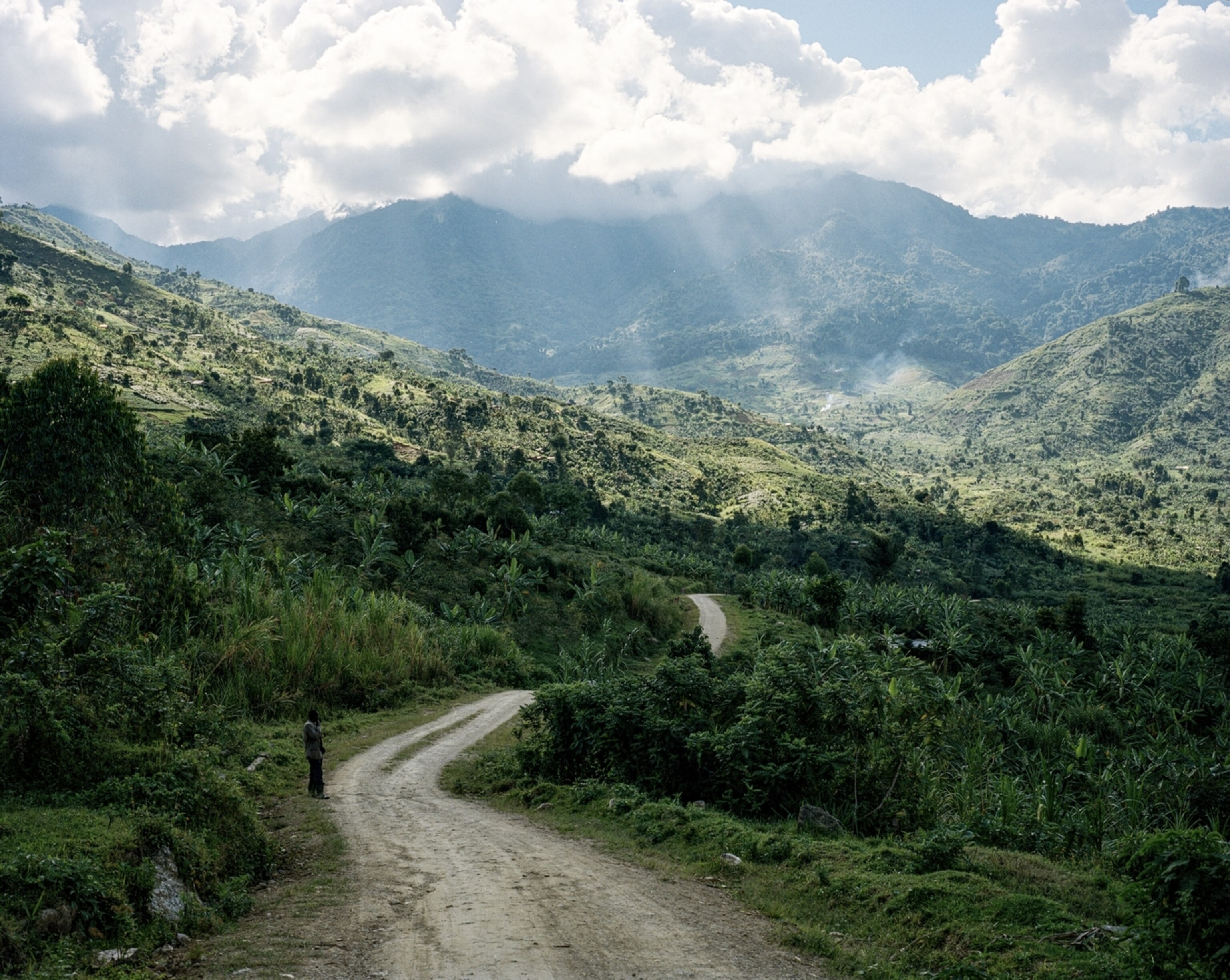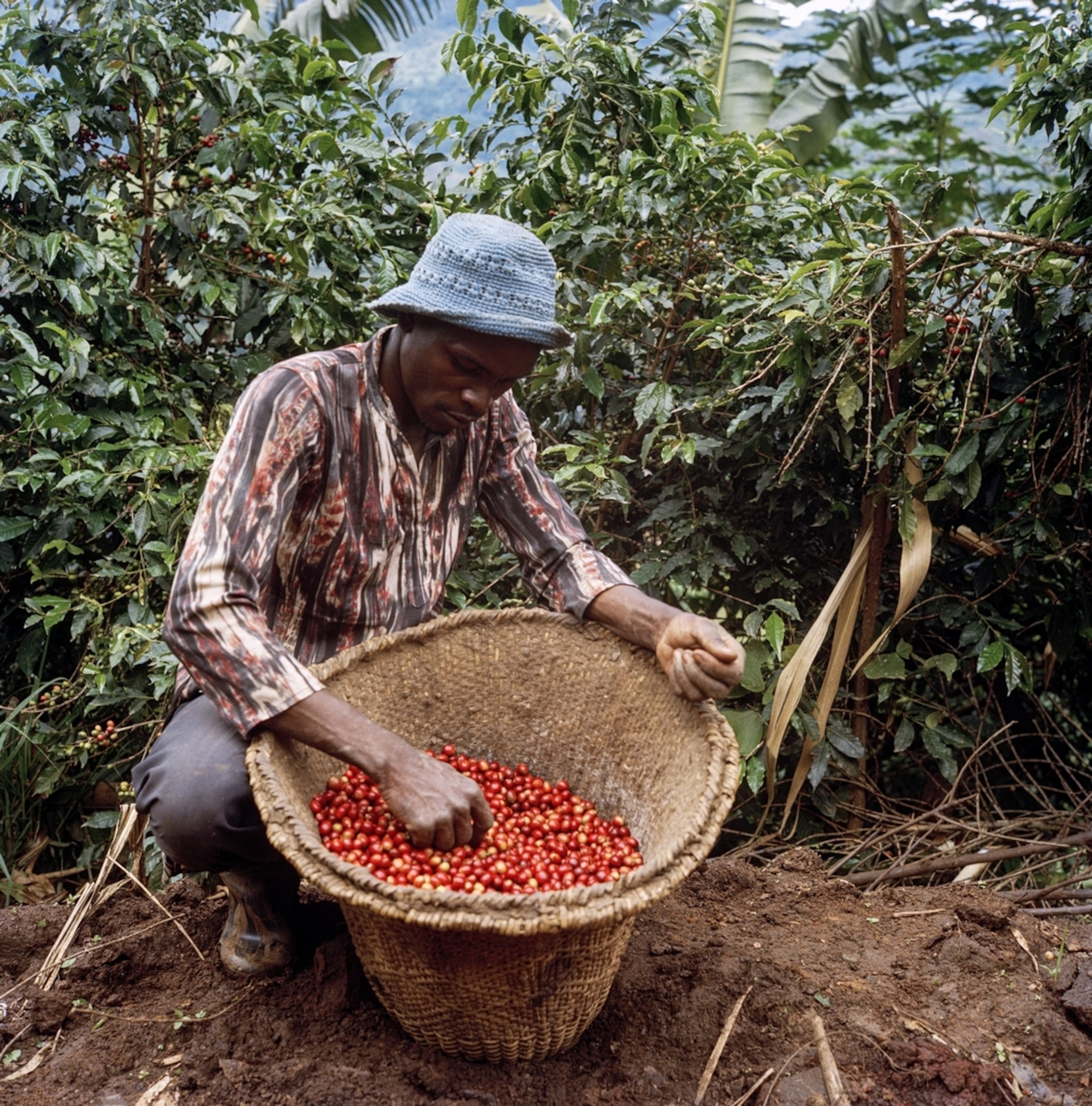Freckled across the misty, fertile slopes of the Rwenzori mountains, Ugandan smallholders nurture coffee that’s starting to become known around the world. The climate, altitude, and soil rich in nitrogen all contribute to the brew’s sweet, citrusy notes and hidden, dark chocolate depths, but Uganda’s relationship with coffee has been as deep and complex as the beans grown there.
Decades of poor marketing chain structure have darkened an entire generation of smallholders’ attitudes toward farming coffee and caused it to fade from the region. After being heavily encouraged to produce coffee to supplement Uganda’s foreign exchange earnings in the mid 1900s, poor regulatory policies forced smallholders to sell to numerous trading middlemen in order to get their relatively small yields to an exporter—a transaction that’s often hurried, costly, and more concerned with quantity than quality. But, in the last few years in particular, things have been changing for the better.

Kirimbwa Joseph is a farmer on the forefront of a coffee revival in Uganda. Working with Nespresso and its implementation partner Agri Evolve, he’s pioneering new techniques to cultivate better quality coffee cherries, creating a better life for his family in the process. Training from agronomists working with a Nespresso revival program is giving Joseph the knowledge to manage his crop much more efficiently. He now knows when to prune or replace trees for maximum productivity, the right foliage to plant to keep the soil fertile, and how to develop biodiversity rich enough to pollinate his coffee. Perhaps most importantly, Joseph knows when to harvest. “After receiving training, I changed the way I picked my coffee,” he says. “If I pick the red cherries, it’s better quality and will get me more money.”
Joseph is now becoming somewhat of a role model for other farmers in the area, as he demonstrates the benefits of breaking away from less efficient harvesting habits. Poverty in the Rwenzoris often leads farmers to pursue a faster dollar, receiving an advance payment for their entire crop from traders before harvesting even begins. This need to deliver results in farmers having to pillage branches of every cherry, regardless of how ripe they are; they pick all variations of size, color, and grade. The uneven mix of unripe green, orange, and yellow cherries weighs less than their riper, redder counterparts and fetches less money overall—making for a one-off payment that’s not fully worth it. Now, though, more established infrastructure—such as a new Nespresso-funded coffee mill in Bugoye—and a renewed demand for quality are changing things for the better.
In its pursuit of the highest quality coffee, Nespresso will always pay a premium price for the best cherries. Not only does Nespresso pay farmers more than what they would get for a lower quality yield, the company does so consistently. This makes it worthwhile for farmers to spread out harvesting and only pick red cherries, leaving the rest to ripen and fetch the higher price that Nespresso is guaranteed to pay.
It will likely take time for these new attitudes toward coffee to truly take root in the community, but with farmers like Joseph able to enjoy financial security, word soon spreads. Raising the standards of coffee in the Rwenzoris has been about making it a viable livelihood for those who grow the crop, as it will ensure a higher quality of coffee and a higher quality of life for generations to come.






